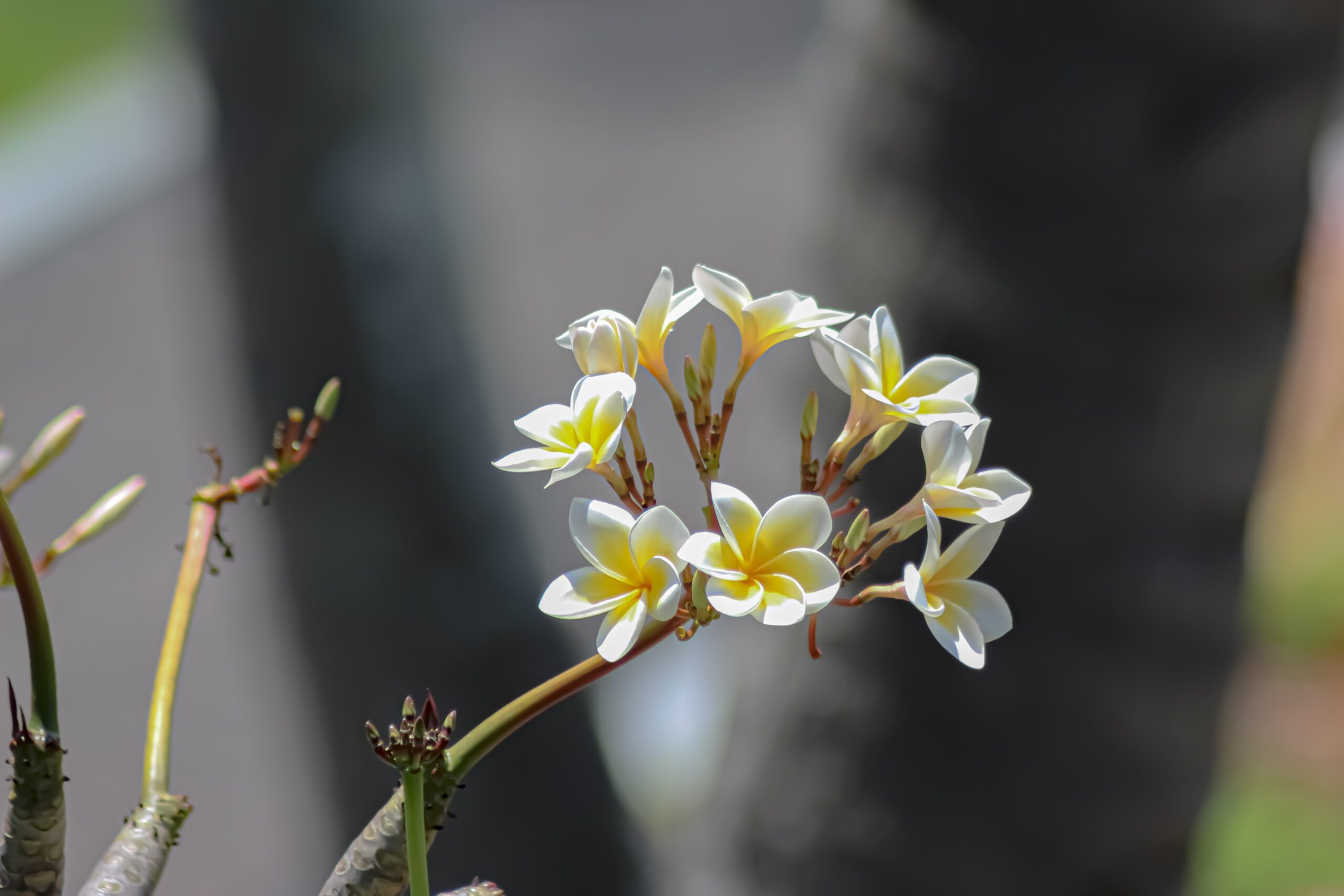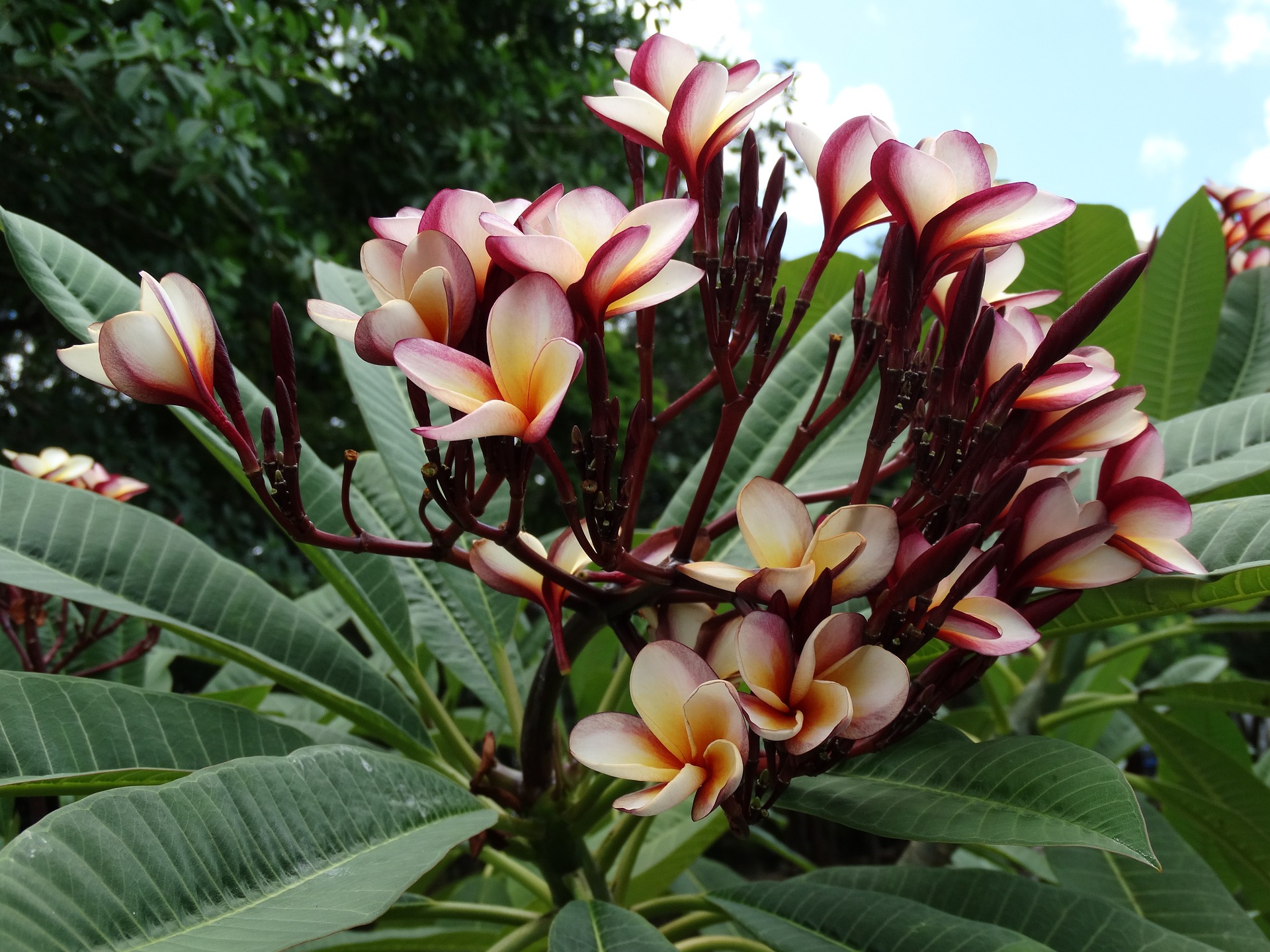
What?
This post is about the Frangipani or the Plumeria.
This is a tree that is really ubiquitous in Southeast Asia and other than the fact that it’s planted all over the tropics, its significance is interwoven with so many cultural narratives of Southeast Asia. A short list of some of this interweaving.
+ The national flower of Laos (source)
+ In Indonesia, Philipines, Malaysia, the Frangipani is commonly planted and associated with graveyards (source)
+ Unsurprisingly, the tree or the scent of the flowers would be associated with ghosts (Vietnam, Malaysia)
+ In Bali, Frangipani flowers are used as offerings (source)
+ In Laos, Khmer, Hindi, Bengali all have names that link it to Champa, the old polity of southern Vietnam. (Dok Champa, Champaka, Champei, etc; source)
+ Interestingly, in Malaysia and Indonesia, it is called Bunga Kamboje/Kamboja, Cambodian flower (Cambodia or the Khmer empire, which did have a long history with Champa)
+ In another twist to all the complicated names, one of the possible histories of the Thai name for the Frangipani, Lan tom, refers to a victory of a Siam army over the Khmer army. (source)
+ And in a much more modern etymological reference, the name of one of the more popular variants is the Plumeria Obtusa, aka “Singapore White” (the first cutting was from Singapore Botanical Gardens in 1930s, source; slide 14)
Why is it interesting?
Why I thought the Frangipani is interesting to mention is that, despite the large amount of local significance as well as the regional names given to the plant…
This plant is not indigenous to Southeast Asia.
It’s a New World plant! Native to the West Indies, Mexico, and Central and South America and most likely brought over and popularized by missionaries.

So what gives? How did the local name of this plant from Americas get so deeply intertwined with the history of Southeast Asia?
A newsletter by Pha Tad Ke botanical garden in Laos offers up two theories:
1. The first being that Frangipanis were part of the region’s history, 5th century, the Chams ruled over Southern Laos and planted Frangipanis everywhere, and when the Chams left, the Laos just took the plant as their national emblem and named it after the Chams
2. The other more realistic theory, is that the Magnolia Champaca, which got it’s name from it’s Sanskrit name Campaka, which is native to these regions and has fragrant white flowers, and people just continued to use that name since the Frangipani had white flowers and were fragrant as well. (The newsletter; much more is written about the Frangipani)
The Magnolia Champaca were mentioned in various Hindu text and had religious significance in Buddhism too, which might also explain how that spiritual association also transposed, along with the name from the Magnolia to the Frangipani too.
3. This is my own third theory, I wonder about the plausibility that both theories could be slightly right, that the Chams did plant loads of Magnolia Champaca and even got their name from it. (I couldn’t find the origins of the name of the Chams, only this site which mentions the Sanskrit meaning, suggesting a link).
And when the parts of Southeast Asia was exposed to Frangipanis, they mistook it for the magnolias that the Chams are associated with and named the Frangipani after the them, rather than a uniform Sanskrit misnomer throughout.
The fact that the namings refers to a place or a people, could explain why in Malay, it is called the Bunga Kemboja; the Khmers and the Chams have a long complex history, and when Champa eventually fell to the Viets, a large number of Chams escaped to Cambodia.
Trivia
– Coming back to confusing names: The French name for Magnolia Champaca, is ilang ilang which is French for another plant, Ylang Ylang. Both of which are also used as offerings in Hindu rituals. Both have fragrant yellow flowers with long petals.
– The name Plumeria was given in honour of Charles Plumier, a famed French botanist (also a member of the clergy) who made many Botany trips to the West Indies in the 1600s. The other common name Frangipani apparently refers to a Marquis Frangipani, who made perfumes which smells like the flower. (Frangipani is also an powerful medieval Rome family) (source)
– Here’s a link that mentions that it was the Christian missionaries that started the tradition of planting Frangipanis in graveyards and the Muslims and Hindus followed suit. The photo at the top of this post is from a Christian cemetery in Penang.
P.S.
I do want to point out that just because it’s not indigenous, doesn’t mean that Frangipanis don’t “belong” here.
In “The Art of Moana“, the artists mentioned trying to only depict native plants, but included the Frangipani in it. Most likely because of the cultural/visual significance of it to Polynesian culture.
The thing is, the Frangipani has been here for a few hundred years and that is way enough time for societies to adopt or “own” things as part of their culture or traditions. (Heck, many nation states of SEA are less than 100 years old and nationalism can get pretty strong.)
Besides, the region is a like a cultural sieve for foreign stuff, ideas, religions, food, what more is another beautiful tree to the mix that it has taken as it’s own.
This post really is not an investigation for some sort of Southeast Asian authenticity but I feel it is about the importance of knowing, and not taking things for granted.
This post was originally published on June 2, 2017 on the A Thousand Thousand Islands Patreon. Some resources have been updated.


One Response
Interesting! I was searching to learn about why plumeria is the country flower of Laos but yet it’s not native to southeast asia. Thanks for sharing!